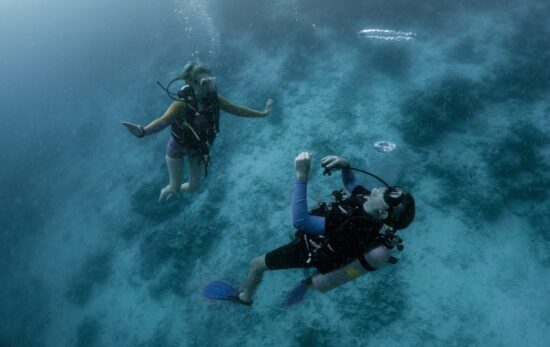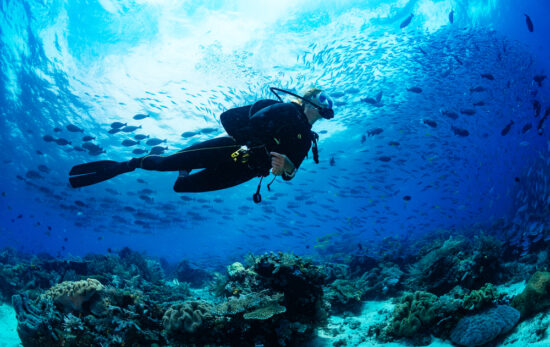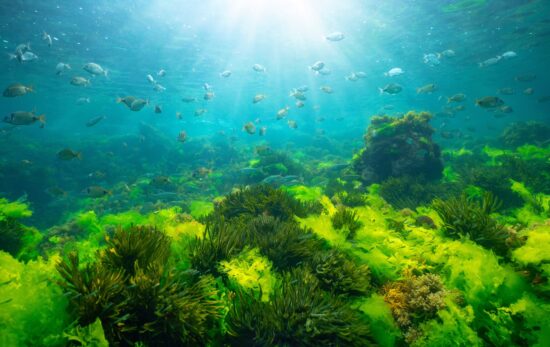Have you ever thought about what it’s like to be part of history and witness it happening first hand? That’s what life was like for Joan Li, a dive instructor and marine biologist, in 2020.
Two years ago, newspapers and social media were filled with sensational headlines like:
- “Scientists Find Reef Taller than Empire State Building” (BBC)
- “Scientists Discover 500 Metre-Tall Skyscraper Coral Reef at Australia’s Great Barrier Reef” (The Guardian)
- “Ancient Coral Reef Discovered off Australian Coast” (The Times)
When I saw the news, I thought “OMG! Joan is on that ship. I will ask her all about it!” And that is how legends are born.
I met Joan on my first scuba instructor contract in the Maldives. And from the moment I saw her, I knew we would be best friends. We were food and dive buddies and enjoyed countless movie nights for almost a year on a small island in the middle of the Indian Ocean. Until now, she is my great guru in the field of marine science and ocean protection. I’ve learnt so much from her about coral reefs and their restoration.
But let’s start from the beginning…
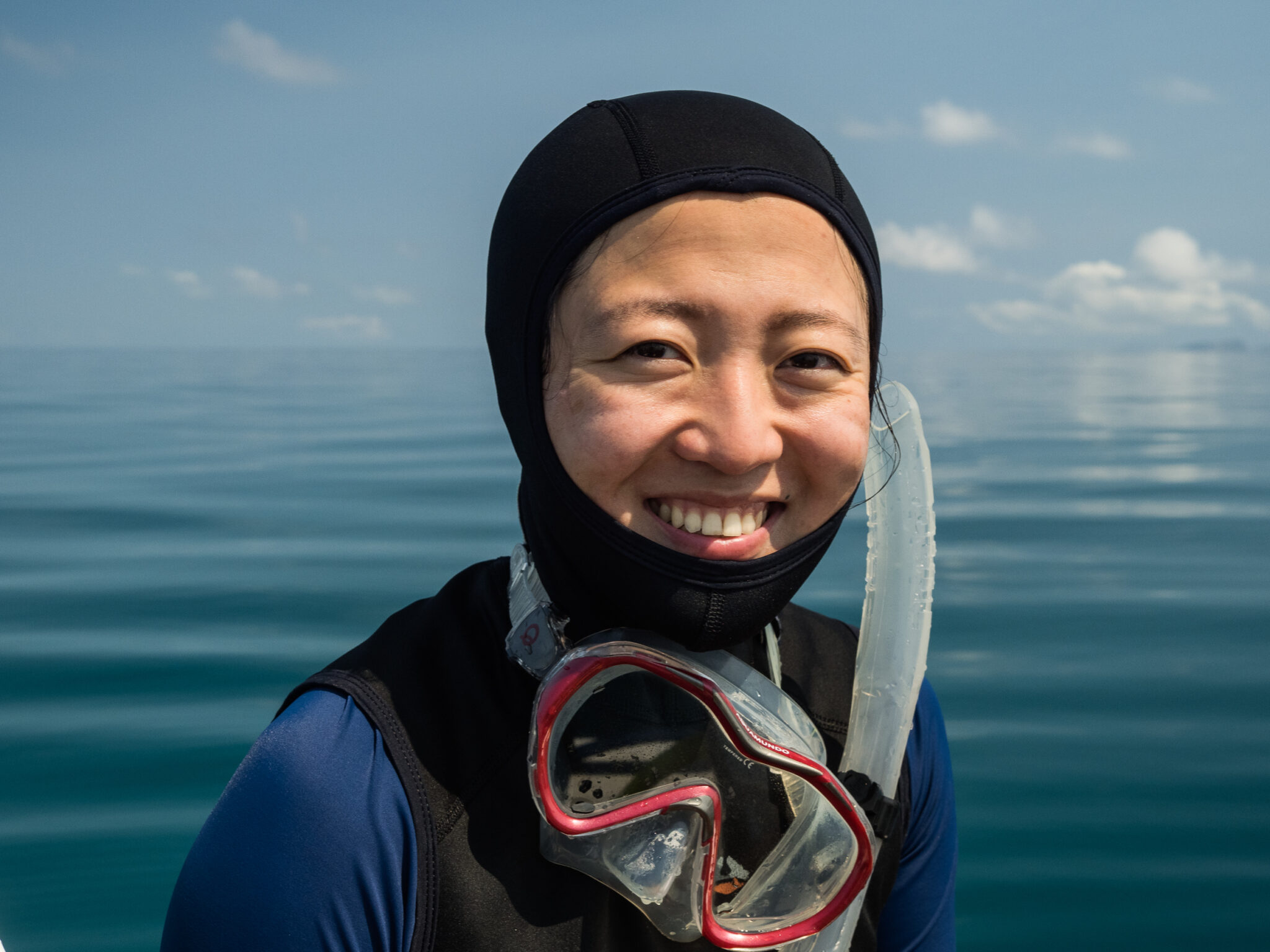
It Was Not Love at First Sight for Joan
Every dive instructor has a pre-diving history. Like me, Joan had a career before becoming a PADI Pro. She started her work life as an insurance agent. Most of her peers were working in the finance world. Being surrounded by this culture, she thought office work was also her path, but little did she know that the universe had prepared something else entirely for her.
One birthday, Joan was given a Discover Scuba Diving experience in Sipadan, Malaysia. If it weren’t for this experience, the world of diving might never have met Joan Li.
For many of us, diving is a life-changing thing. It can lead somewhere we never expected. That certainly was true for Joan, but who wouldn’t fall in love with scuba diving in one of the top 10 dive destinations in the world? Sipadan is filled with humphead parrotfish, sea turtles and coral reefs. This experience opened Joan’s eyes to a completely new world and took over her life.
Although Joan studied biology at university, marine biology was not her first choice of discipline. Back when she was studying in China and Hong Kong, most of her peers chose to specialize in pharmacy, microbiology or neuroscience. It was only when she started diving that Joan realized marine biology could also be a viable option for her.
Yet, Joan wanted to learn marine conservation hands-on, not just from books and lectures. After some time, she committed to a five-month internship in the Philippines, which combined marine science with the PADI Divemaster course. During her internship, Joan learned about reef surveys, species ID, collecting data about sediments in the water column and working as a PADI Pro.
Joan stepped out of her comfort zone and did something totally different. At the same time, she realized that she needed to progress to the next step as a scuba diver in order to do more in marine science and marine education. The PADI Instructor Development Course would open many doors around the world to her.
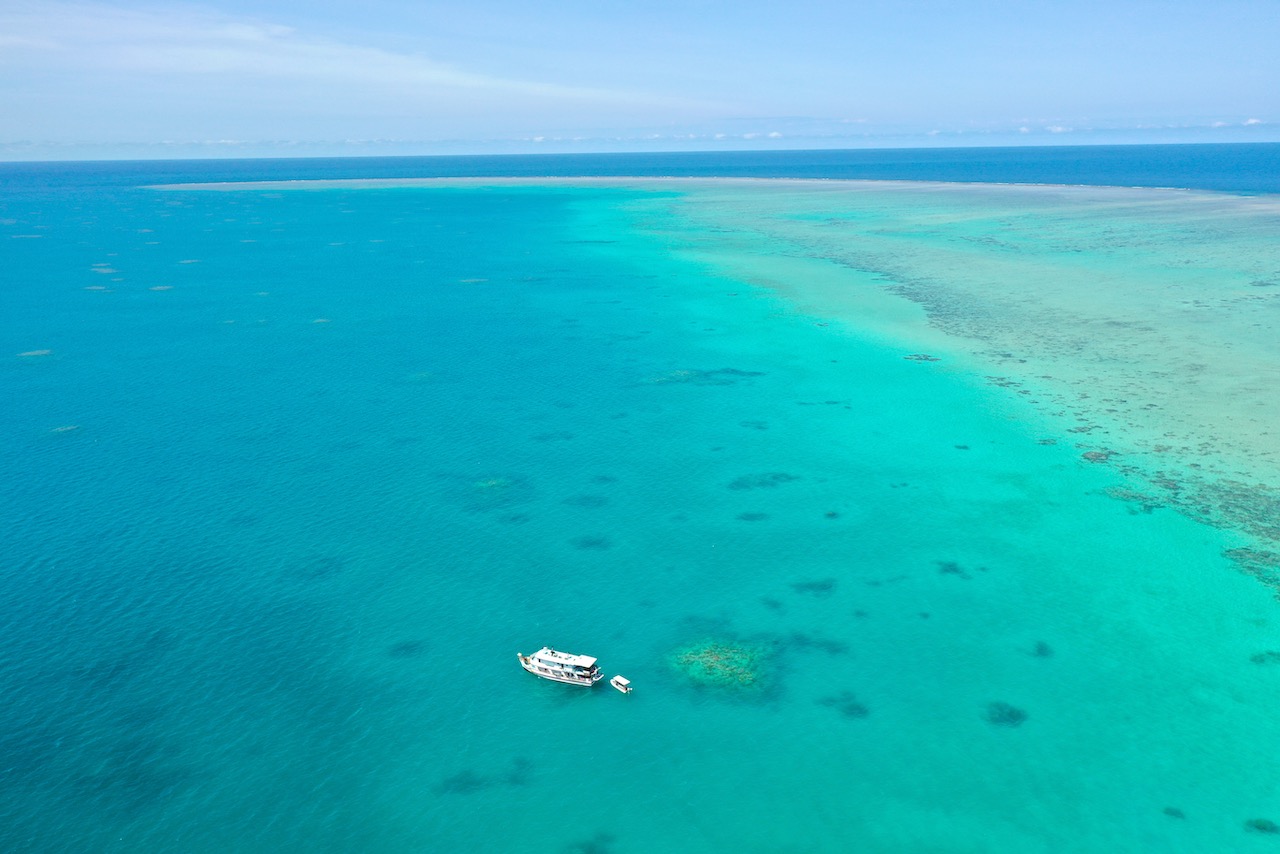
Of course, all of this led her to the Maldives, where she and I met. As a marine biologist at the resort, Joan was responsible for providing guests with marine education. Her passion for the marine world came through whenever she was explaining the ecosystem of the island house reef and how guests could get involved in protecting coral reefs. Any time she gave a briefing before snorkeling or diving trips, you could hear how her heart belonged to the ocean.
In addition to marine education, Joan also ran a coral propagation project at the resort. Every month, we would have dozens of resort guests, including divers and snorkelers, help us set up new coral frames at the bottom of the house reef.
Plus, Joan set up regular Dives Against Debris and ran the PADI AWARE Adopt the Blue program at the resort. Many guests even chose to help us clean up the house reef while on holiday. Collecting trash from the reef takes time, especially when you include separating, segregating, documenting and collecting data about the type and amount of debris found. During a single year, we collected over 550 kg/1200 lbs. from around the small island in the Maldives.
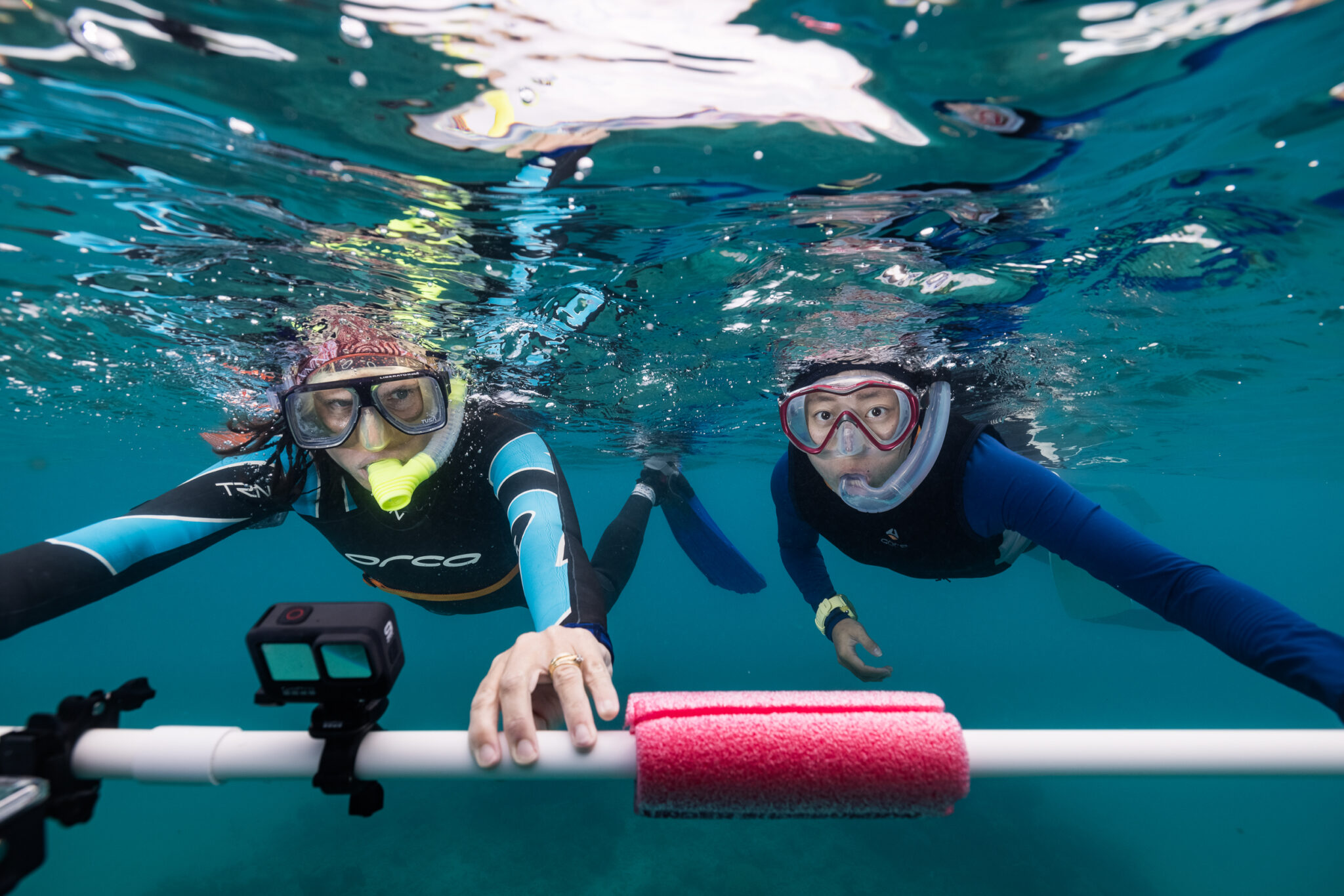
COVID – Obstacle or Opportunity?
Joan is a fast learner, and she quickly realized that to go further in marine science, she needed more tools and knowledge. It seemed like going back to school was her next step, and time had come to make the next life decision. I remember when we sat on my bed in our Maldivian room. I took out my laptop, opened Excel and created a table of pros and cons to help her decide which Masters program she should apply for to advance her career in marine science. A few months later, she became a grad school student at the world-famous James Cook University in Australia, located next to the Great Barrier Reef – the perfect place to learn about coral reef protection.
After about six months, the COVID pandemic paralyzed the world and shut Australia down for an extended period.
Joan wasn’t a fan of online lectures. She wanted to do more and learn more. Being as committed as she is, Joan managed to swap her lectures for a variety of self-paced hands-on projects. Each one was a challenge that needed a lot of work, but she was learning new things. When she realized that sitting in a lab or an office was not what she is passionate about, she learnt how to dive. When diving wasn’t enough, she learnt how to code and to fly drones to collect data for use in marine science.
From Dive Instructor to Deep Sea Explorer
Joan’s most famous deep sea expedition to date is the one during which scientists discovered the skyscraper reef. Why was this discovery so exciting? Because it shows us how much more is yet to be discovered under the surface. Man has discovered so many please; we’ve even produced a full map for Mars. Yet, 80% of the ocean is unmapped, unobserved and unexplored, according to NOAA.
Although the benthic seafloor was never a key interest of Joan’s, her experience in grad school led her on the expedition that would cruise around the northern Great Barrier Reef in order to map, observe and explore the deep sea. Other than the discovery of the skyscraper reef, which is taller than the Empire State Building, Joan also observed the first video capture of a wild Ram’s Horn Squid, met amazing scientists, engineers and crew member and lived on a modern research vessel equipped with a sauna, gym, library, karaoke room and a three-ton, state-of-the-art ROV (remote operated vehicle).
You can read more about this expedition here or follow along with future expeditions at @schmidtocean.
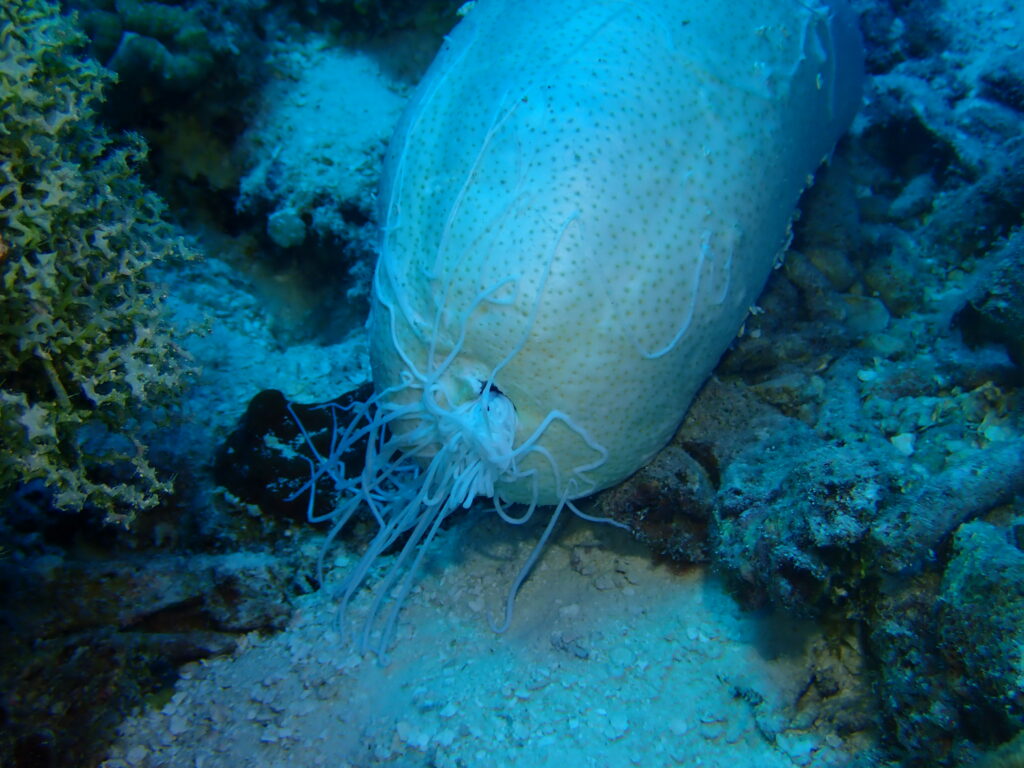
Discovering a Love of Weird Marine Life
If you ask divers about their favorite marine life, most would answer with something like sharks, whales or turtles. I’m not sure anyone other than Joan Li would say, “Sea cucumbers.”
As a diver, seeing a sea cucumber isn’t the most exciting thing. It might even be considered a boring animal. However, sea cucumbers really are magical. Not only are they commercially important, they also provide crucial ecological functions. These animals can do something called “bioturbation”, or in layman’s terms, eating and pooping sand. Why is eating and pooping sand so important? Because this action recycles nutrients back into the other trophic levels of the marine ecosystems. A study published last year shows that on just one reef, the sea cucumbers pooped FIVE Eiffel towers of sand!
As you can see, it is important for us to learn more about sea cucumbers. We need to know where they are, how they are distributed, how big the population is, what is their preferred habitat, etc. To find out, Joan conducted a study to identify and count sea cucumbers using drone imagery and artificial intelligence. This led her to her current job – drone mapping for environmental conservation.
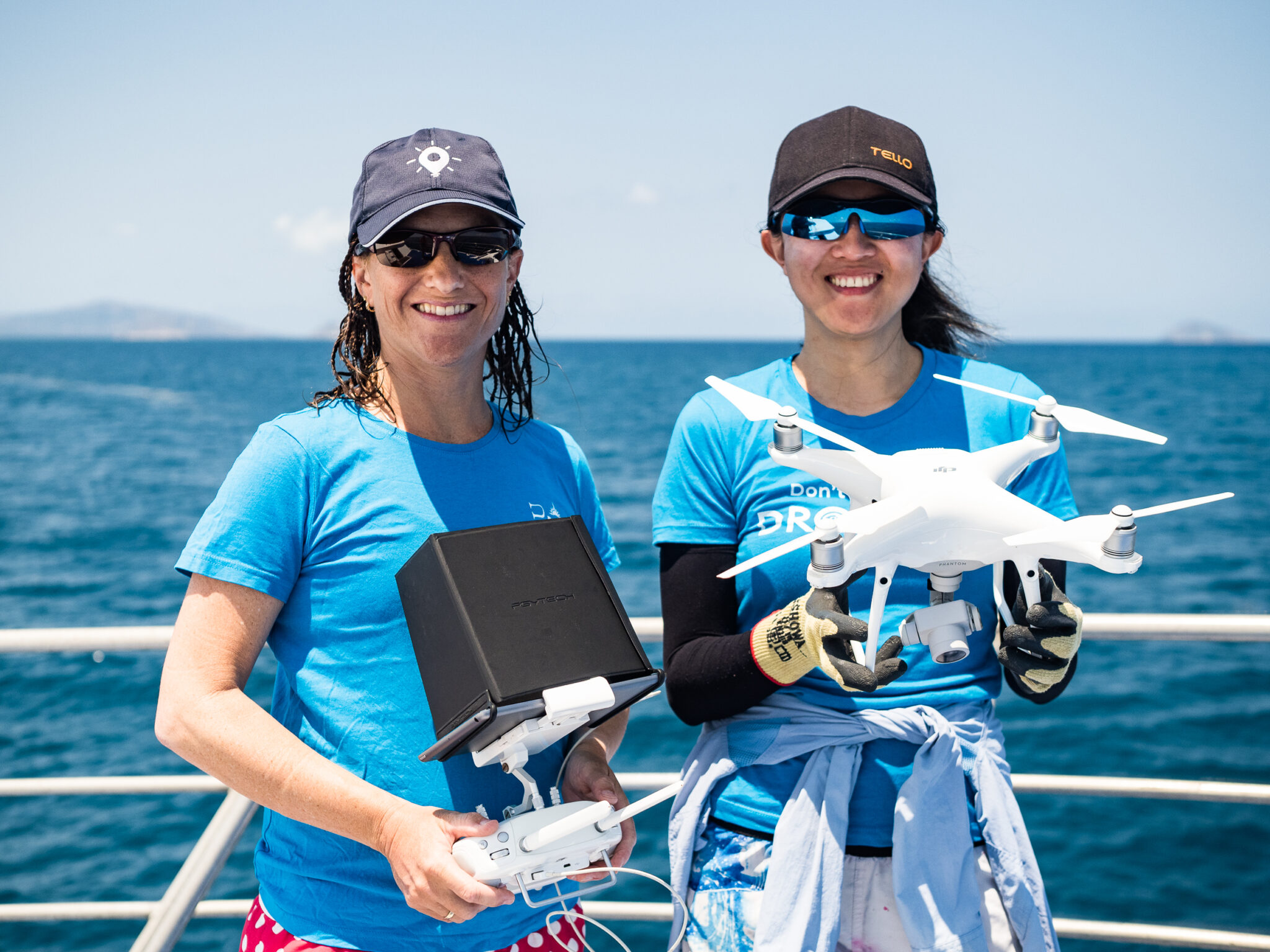
As a woman in STEM, Joan is a huge inspiration. Did she know much about diving before her birthday trip? No. Can she teach another person to dive? She can. Was she a drone pilot before? No. Did she learn to use it in her research? She did. Did she know programming before? No. Is coding part of her job description now? It is. Are sea cucumbers the end of her science career? Absolutely not. She has way more to say and do in this field.
I am lucky to be surrounded by such people. During one year in the Maldives, Joan taught me more about coral reefs than I ever learnt before. But she also showed me to think outside the box and to see wider, behind the horizon. She tried and mastered many skills not normally associated with marine science: coding, mapping, flying drones, etc. This is how you change the world and protect coral reefs – by learning, teaching and inspiring others.
I asked Joan what message she’d like to share with young people and anyone who might be interested in learning to dive. She said:
“Don’t be afraid of trying and making decisions. It can be terrifying, but you’ll never know what it will bring you. I was never thinking of becoming a marine scientist, like some people who dream about it since they were kids. But I am now enjoying every single bit of my work and life near the Great Barrier Reef and hoping to explore other reefs as much as possible.”
To see amazing photos from Joan’s projects, field trips and research, visit her Instagram @_bubble_maker.
Ready to dive in and change your life as well as the ocean, like Joan Li? Get scuba certified and experience Nature Unfiltered.
Written by Martyna Skura, PADI AmbassaDiver
Born and raised in Poland, Martyna has spent the last ten years traveling and working overseas in more than 8 countries – with just 20 kilograms (44 pounds) of luggage. She’s now living in the Maldives and is working towards becoming a PADI Master Scuba Instructor. She creates content for her YouTube channel, social media channels, and recently published a book about her adventures around the world, above and below the surface.
*Featured image courtesy of Harriet Spark/Grumpy Turtle Creative
